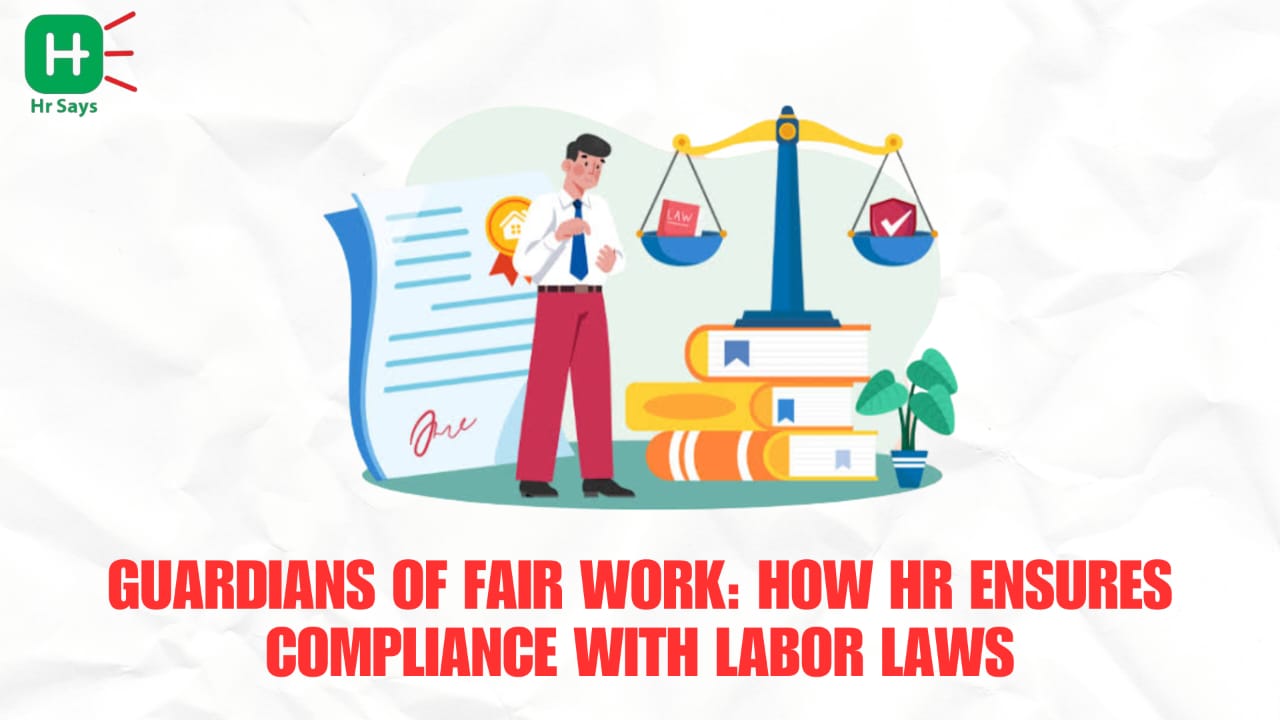What makes a workplace fair, safe and legal? Human Resources goes unrecognized behind the scenes of the policies and the paperwork. HR is the one that makes labor laws living rather than printed. They play a protective and preventive role in ensuring that organizations and employees are on track.
The Watchful Eye of HR
There is no such thing as compliance. The HR departments act as the guard dog and ensure that labor laws are followed to the letter on a daily basis. HR oversees policies, procedures and behaviours though the recruitment process up to the time of retirement. This kind of regular tracking removes costly mistakes and builds trust.
Setting the Foundation: Policies and Contracts
Every organization needs a strong base to stand on. HR establishes this by designing fair policies and contracts that comply with legal standards. These documents act as guiding maps for both employers and employees.
Key Areas Covered in Policies
● Working hours and overtime rules
● Minimum wage compliance
● Anti-discrimination clauses
● Leave entitlements
● Termination procedures
With clear policies, confusion is avoided, and transparency is maintained.
Training and Awareness: Spreading Knowledge
What use are rules if no one understands them? HR ensures employees and managers are
aware of their rights and duties under labor laws. Regular training sessions make compliance a
shared responsibility rather than a top-down order.
Why Training Matters
● It prevents unintentional violations.
● It fosters a culture of accountability.
● It reduces disputes and grievances.
By keeping everyone informed, HR minimizes risks and promotes workplace harmony.
Monitoring and Auditing: Staying Alert
Compliance cannot remain static. HR conducts regular audits and inspections to identify gaps. Whether it is payroll reviews, working hour checks, or workplace safety, HR ensures that rules are followed in practice, not just on paper.
Typical Audit Focus Areas
● Wage and benefit accuracy
● Equal opportunity practices
● Health and safety compliance
● Proper documentation
Through monitoring, issues are spotted early and corrected quickly.
Handling Grievances and Ensuring Fairness
Workplaces often face conflicts. HR provides a lawful channel for grievances, ensuring complaints are addressed fairly. When employees feel heard, compliance naturally strengthens. HR’s role here is to mediate, record, and resolve disputes within legal frameworks.
The Consequences of Non-Compliance
Non-compliance carries heavy costs. Legal penalties, financial losses, and reputational harm can follow. Employees may lose trust, and organizational credibility suffers. HR prevents these outcomes by making compliance a proactive practice rather than a reactive correction.
Conclusion
HR’s role in labor law compliance is both strategic and human. By setting policies, spreading awareness, monitoring practices, and addressing conflicts, HR ensures workplaces remain fair and lawful. The unseen effort protects both employers and employees while upholding the dignity of work.

 HR ensures labor law compliance by creating policies, training staff, monitoring practices, and resolving conflicts. Their proactive role safeguards organizations from penalties and builds a fair, transparent workplace culture where both employer and employee are protected.
HR ensures labor law compliance by creating policies, training staff, monitoring practices, and resolving conflicts. Their proactive role safeguards organizations from penalties and builds a fair, transparent workplace culture where both employer and employee are protected.












.jpeg)
.jpeg)

.jpeg)

.jpeg)


.jpeg)

.jpeg)

.jpeg)


